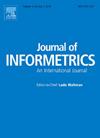更高的团队性别多样性是否与更好的科学影响相关?
IF 3.5
2区 管理学
Q2 COMPUTER SCIENCE, INTERDISCIPLINARY APPLICATIONS
引用次数: 0
摘要
涉及不同性别学者的合作研究是科学研究中的一个突出主题,已经获得了大量关注。虽然有几项研究调查了特定性别的合作模式与论文的科学影响之间的联系,但有助于增强科学影响的特定性别多样性因素在很大程度上仍未得到探索。在本研究中,我们以自然语言处理(NLP)和图书馆与信息科学(LIS)领域为例,分析了性别多样性与论文科学影响的相关性。我们的研究结果揭示了三个关键观察结果:首先,在NLP和LIS领域都存在显著的性别差异,女性学者的代表性不足。与LIS领域相比,NLP领域的性别差异更为明显。其次,基于NLP和LIS领域的论文,我们发现不同性别组成的论文获得不同的引用数,混合性别合作的平均引用数逐渐高于同性合作。最后,论文合作的性别多样性与论文被引次数呈倒u型关系。根据最具影响力的性别多样性计算,NLP和LIS团队的理想性别比例是一种性别占作者总数的5%至15%。本文有助于探索合作研究中最具影响力的性别多样性,并为指导更有效的科学论文合作提供见解。本文章由计算机程序翻译,如有差异,请以英文原文为准。
Is higher team gender diversity correlated with better scientific impact?
Collaborative research involving scholars of various genders constitutes a prominent theme in scientific research that has garnered substantial attention. While several studies have investigated the connection between gender-specific collaboration patterns and the scientific impact of paper, the specific gender diversity factors that contribute to enhanced scientific impact remain largely unexplored. In this study, we analyze the correlation between gender diversity and the scientific impact of papers using the examples of Natural Language Processing (NLP) and Library and Information Science (LIS) domains. Our findings reveal three key observations: First, significant gender disparities exist in both NLP and LIS domains, with underrepresentation of female scholars. The gender disparity is more pronounced in the NLP domain compared to the LIS domain. Second, based on papers from the NLP and LIS domains, we find that papers with different gender compositions achieve varying numbers of citations, with mixed-gender collaborations gradually obtaining higher average citation counts compared to same-gender collaborations. Lastly, there is an inverted U-shaped relationship between the gender diversity of paper collaborations and the number of citations received by those papers. Based on the most impactful gender diversity calculations, the ideal gender ratio for NLP and LIS teams within a range where one gender constitutes 5% to 15% of the total number of authors. This paper contributes to the exploration of the most impactful gender diversity in collaborative research and offers insights to guide more effective scientific paper collaboration.
求助全文
通过发布文献求助,成功后即可免费获取论文全文。
去求助
来源期刊

Journal of Informetrics
Social Sciences-Library and Information Sciences
CiteScore
6.40
自引率
16.20%
发文量
95
期刊介绍:
Journal of Informetrics (JOI) publishes rigorous high-quality research on quantitative aspects of information science. The main focus of the journal is on topics in bibliometrics, scientometrics, webometrics, patentometrics, altmetrics and research evaluation. Contributions studying informetric problems using methods from other quantitative fields, such as mathematics, statistics, computer science, economics and econometrics, and network science, are especially encouraged. JOI publishes both theoretical and empirical work. In general, case studies, for instance a bibliometric analysis focusing on a specific research field or a specific country, are not considered suitable for publication in JOI, unless they contain innovative methodological elements.
 求助内容:
求助内容: 应助结果提醒方式:
应助结果提醒方式:


